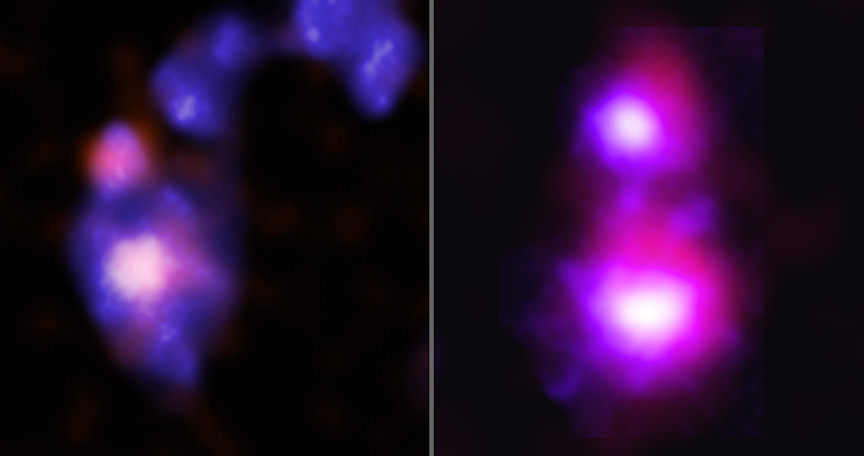Giant Black Holes on Collision Course
NASA | MSFC | SAO | Chandra X-ray Observatory | 2023 Feb 22
A new study using NASA’s Chandra X-ray Observatory has tracked two pairs of supermassive black holes in dwarf galaxies on collision courses, as discussed in our latest press release. This is the first evidence for such an impending encounter, providing scientists with important information about the growth of black holes in the early Universe.Credit: X-ray: NASA/CXC/Univ. of Alabama/M. Micic et al.;
Optical: International Gemini Observatory/NOIRLab/NSF/AURA
By definition, dwarf galaxies contain stars with a total mass less than 3 billion Suns — or about 20 times less than the Milky Way. Astronomers have long suspected that dwarf galaxies merge, particularly in the relatively early Universe, in order to grow into the larger galaxies seen today. However, current technology cannot observe the first generation of dwarf galaxy mergers because they are extraordinarily faint at their great distances. Another tactic — looking for dwarf galaxy mergers closer by — had not been successful to date.
The new study overcame these challenges by implementing a systematic survey of deep Chandra X-ray observations and comparing them with infrared data from NASA’s Wide Infrared Survey Explorer (WISE) and optical data from the Canada-France-Hawaii Telescope (CFHT). ...
Two Candidates for Dual AGN in Dwarf-Dwarf Galaxy Mergers ~ Marko Mićić et al
- Astrophysical Journal 944(2):160 (2023 Feb 20) DOI: 10.3847/1538-4357/aca1bb
- arXiv > astro-ph > arXiv:2211.04609 > 08 Nov 2022
